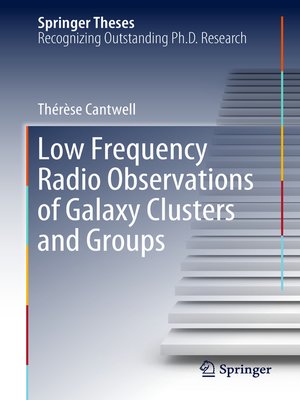Low Frequency Radio Observations of Galaxy Clusters and Groups
ebook ∣ Springer Theses
By Thérèse Cantwell

Sign up to save your library
With an OverDrive account, you can save your favorite libraries for at-a-glance information about availability. Find out more about OverDrive accounts.
Find this title in Libby, the library reading app by OverDrive.



Search for a digital library with this title
Title found at these libraries:
| Library Name | Distance |
|---|---|
| Loading... |
This book uses new data from the very low radio frequency telescope LOFAR to analyse the magnetic structure in the giant radio galaxy NGC6251. This analysis reveals that the magnetic field strength in the locality of this giant radio galaxy is an order of magnitude lower than in other comparable systems. Due to the observational limitations associated with capturing such huge astrophysical structures, giant radio galaxies are historically a poorly sampled population of objects; however, their preferential placement in the more rarefied regions of the cosmic web makes them a uniquely important probe of large-scale structures. In particular, the polarisation of the radio emissions from giant radio galaxies is one of the few tools available to us that can be used to measure magnetic fields in regions where the strength of those fields is a key differentiator for competing models of the origin of cosmic magnetism. Low frequency polarisation data are crucial for detailed analyses of magnetic structure, but they are also the most challenging type of observational data to work with. This book presents a beautifully coupled description of the technical and scientific analysis required to extract valuable information from such data and, as the new generation of low frequency radio telescopes reveals the larger population of giant radio galaxies, it offers a significant resource for future analyses.







